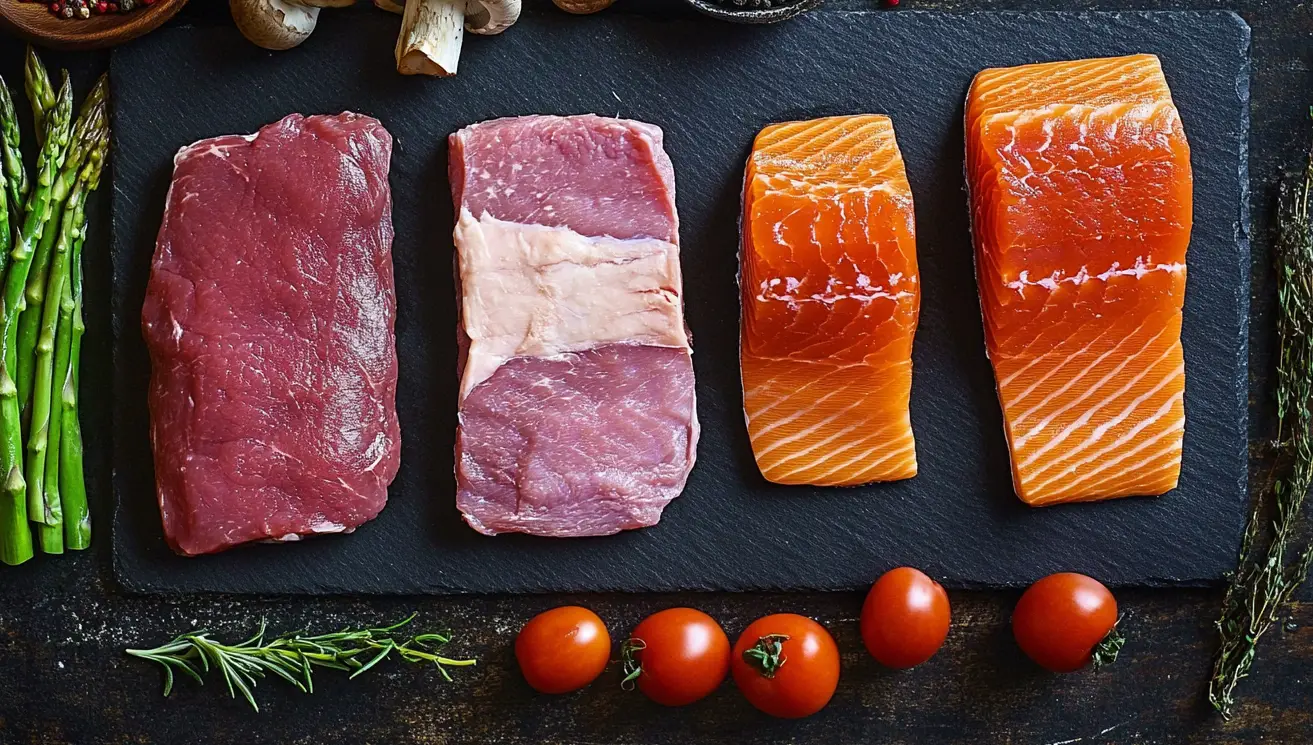The Atkins Diet Plan ; A Comprehensive Guide for Weight Management
The Atkins diet, developed by Dr. Robert Atkins in the 1970s, is a low-carbohydrate, high-protein, high-fat eating plan designed to promote weight loss and improve metabolic health. By limiting carbohydrate intake, it encourages the body to enter ketosis, a state where fat is burned for energy instead of glucose. This approach has shown promise for weight loss and blood sugar control, but it also carries potential risks, such as increased LDL cholesterol and nutrient deficiencies if not carefully managed. Below, we explore the key principles, benefits, risks, and practical tips for following the Atkins diet.
1. Reduce Carbohydrate Intake
o Start with 20–25 grams of carbohydrates per day during the Induction phase to initiate ketosis.
o Gradually increase to 25–50 grams in the Balancing phase, 50–80 grams in the Pre-Maintenance phase, and 80–100 grams in the Maintenance phase.
o Focus on low-carbohydrate vegetables like leafy greens, broccoli, cauliflower, and zucchini.
o Avoid high-carbohydrate foods such as bread, pasta, rice, potatoes, and sugary snacks.
Carbohydrate Content Examples:
o 1 cup spinach = 1 gram carbs
o ½ cup broccoli = 3 grams carbs
o 1 slice bread = 12–15 grams carbs
o 1 cup cooked rice = 45 grams carbs
Note: Excessive carbohydrate restriction can lead to side effects like fatigue or headaches, known as “keto flu.” Ensure adequate hydration and electrolyte intake to minimize these effects. A dietitian can help tailor carb levels to your needs.

2.Increase Protein and Fat Intake
o Choose high-quality protein sources, such as lean meats, poultry, fish, eggs, and plant-based options like tofu.
o Include healthy fats from olive oil, avocados, nuts, and seeds to support satiety and energy needs.
o Protein should ideally account for 20–30% of daily calories, with fats making up 50–60%.
Protein and Fat Content Examples:
o 100 grams chicken breast = 31 grams protein, 3.6 grams fat
o 1 large egg = 6 grams protein, 5 grams fat
o 1 tablespoon olive oil = 14 grams fat
o 30 grams almonds = 7 grams protein, 15 grams fat
Warning: Excessive saturated fat intake may increase cardiovascular risk. Opt for unsaturated fats where possible and monitor lipid levels with your doctor.
3. Follow the Four Phases
o Induction (2 weeks): Strictly limit carbs to 20–25 grams daily to jumpstart weight loss. Focus on meats, eggs, and low-carb vegetables.
o Balancing (until close to goal weight): Gradually add nuts, seeds, and berries, increasing carbs to 25–50 grams daily for variety and continued weight loss.
o Pre-Maintenance: Increase carbs to 50–80 grams daily, introducing whole grains and legumes to prepare for long-term maintenance.
o Maintenance: Sustain weight loss with a personalized carb limit of 80–100 grams daily, emphasizing a balanced, healthy lifestyle.
Note: Progress through phases at your own pace, guided by weight loss goals and health markers. Consult a healthcare provider to ensure safe transitions.

4. Choose the Right Foods
o Foods to Include:
✅ Meats: Chicken, beef, pork (lean cuts preferred)
✅ Fish: Salmon, tuna, cod
✅ Eggs: Whole eggs or egg whites
✅ Low-carb vegetables: Spinach, kale, broccoli, cauliflower
✅ Healthy fats: Olive oil, avocado, nuts, seeds
✅ Limited fruits: Berries (in later phases)
o Foods to Avoid:
❌ Sugars: Sweets, sodas, desserts
❌ Starches: Bread, pasta, rice, potatoes
❌ High-carb fruits: Bananas, oranges, grapes
❌ Processed foods: Chips, crackers, packaged snacks
Tips for Food Choices:
o ✔ Choose fresh, whole foods over processed options to maximize nutrient intake.
o ✔ Use herbs and spices to enhance flavor without adding carbs.
o ✔ Read nutrition labels to identify hidden sugars in packaged foods.
Warning: Restricting fruits and whole grains may reduce fiber and micronutrient intake. Include low-carb, nutrient-dense options and consider supplements if needed, under medical supervision.
1. Weight Loss
o Research suggests the Atkins diet can lead to significant weight loss, particularly in the short term. A 2016 study by Mansoor found that low-carbohydrate diets resulted in an average of 2.17 kg more weight loss than low-fat diets over 6 months to 2 years (British Journal of Nutrition).
o A 2017 systematic review by Anton reported that 9 out of 10 clinical trials on the Atkins diet showed clinically meaningful short-term weight loss (≥5% of baseline weight), with losses ranging from 3.2 kg to 12.8 kg within 6 months (Nutrients).
o Long-term weight loss (≥1 year) was supported in 6 out of 8 trials, with losses ranging from 2.1 kg to 11.4 kg, though adherence challenges were noted.
2. Improved Blood Sugar Control
o For individuals with type 2 diabetes, the Atkins diet may improve glycemic control. A 2017 study by Meng et al. found that low-carbohydrate diets reduced HbA1c levels by 0.44% compared to high- carbohydrate diets, with greater carbohydrate restriction linked to better glucose-lowering effects (Diabetes Research and Clinical Practice).
o This suggests the diet can be a valuable tool for managing blood sugar, particularly in the short term.
3. Cardiovascular Benefits
o Some studies indicate that the Atkins diet can lower triglycerides and increase HDL cholesterol, which are favorable for heart health. The study by Mansoor at 2016 reported a 0.26 mmol/L reduction in triglycerides and a 0.14 mmol/L increase in HDL cholesterol compared to low-fat diets.
o However, these benefits must be weighed against potential risks, such as increased LDL cholesterol.
1. Increased LDL Cholesterol
o A significant concern is the diet’s impact on LDL cholesterol, a risk factor for cardiovascular disease. A study done by Mansoor (2016) found that low-carbohydrate diets increased LDL cholesterol by 0.16 mmol/L compared to low-fat diets.
o Individuals with existing heart disease risk factors should monitor lipid levels closely and consult a healthcare provider.
2. Nutrient Deficiencies
o Restricting fruits, whole grains, and legumes can lead to inadequate intake of fiber, vitamins, and minerals, such as vitamin C, potassium, and magnesium.
o To minimize this risk, include a variety of low-carb vegetables and consider a multivitamin under medical guidance.
3. Long-Term Adherence
o The strict carbohydrate limits can be challenging to maintain, leading to reduced adherence over time. Studies show that less than 1% of participants maintain substantial weight loss beyond a year in some trials (Anton et al., 2017).
o A sustainable dietary pattern is crucial for long-term success.
4. Side Effects
o Initial side effects, often called “keto flu,” may include fatigue, headache, and constipation due to low carbohydrate intake and electrolyte shifts.
o Adequate hydration, electrolyte balance, and gradual carb reduction can help mitigate these effects
• Ideal Candidates:
o Individuals with obesity or insulin resistance seeking rapid weight loss.
o Those with type 2 diabetes aiming to improve blood sugar control.
o People motivated to follow a structured, low-carbohydrate plan.
• Precautions:
o Those with heart disease or high cholesterol should approach cautiously due to potential LDL cholesterol increases.
o Pregnant women or those with specific nutrient needs should avoid it.
o Always consult a healthcare provider before starting to ensure the diet aligns with your health needs.

• Low-Fat Diets: The Atkins diet often outperforms low-fat diets in short-term weight loss, with studies showing an average of 2.17 kg greater loss (Mansoor et al., 2016). However, long-term outcomes are similar when adherence is maintained (Anton et al., 2017).
• Mediterranean Diet: This diet emphasizes whole foods, healthy fats, and moderate carbohydrates, potentially offering comparable weight loss with better cardiovascular benefits due to lower saturated fat intake.
• Ketogenic Diet: Similar to Atkins but with stricter carb limits (often <20 grams daily), the ketogenic diet may be less sustainable for some but shares similar metabolic effects.
The Atkins diet has been adapted for other conditions, such as epilepsy, under the name Modified Atkins Diet (MAD). A 2020 randomized clinical trial by Sharma et al. found that the MAD reduced seizure frequency by 45% in children with drug-resistant epilepsy, though it was less effective than the ketogenic diet (JAMA Pediatrics). A 2023 study done by Kossoff confirmed the MAD’s efficacy for epilepsy, with a higher rate of ≥50% seizure reduction compared to usual care (Seizure). These findings highlight the diet’s metabolic impact, which may indirectly support its use for weight loss, though direct evidence for epilepsy applications is separate.
The Atkins diet offers a structured approach to weight loss and metabolic health improvement, with research supporting its efficacy for short-term weight loss and blood sugar control, particularly for individuals with type 2 diabetes. However, potential risks, such as increased LDL cholesterol and nutrient deficiencies, require careful planning and medical supervision. By following its principles, choosing nutrient-dense foods, and seeking professional guidance, you can maximize benefits while minimizing risks. Consult a healthcare provider to determine if the Atkins diet is suitable for your health goals and needs.